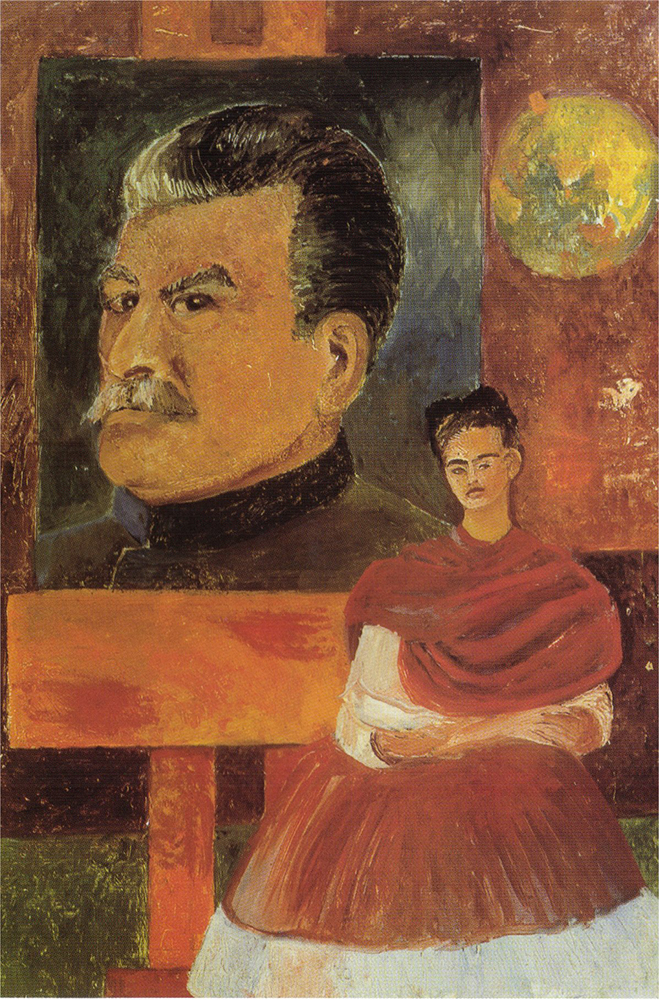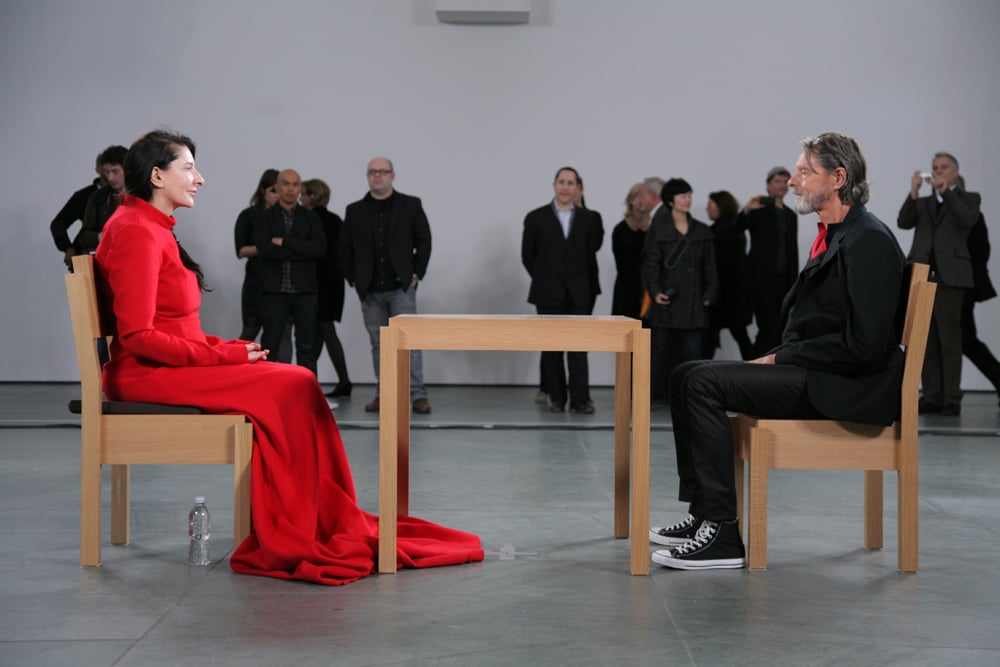During her final years, Frida painted mostly still life but would politicize them by adding a flag, a peace dove, or inscriptions. One of her last self portraits in 1954 was ‘ Marxism Will Give Health to the Sick’, this was a strong political statement in support of the PCM. After this painting she immortalized Stalin in ‘ Self Portrait with Stalin’ which also has an obvious Communist theme.
In 1938, French poet and Surrealist Andre Breton immediately labelled Frida as an innate ‘Surrealist’, until Breton arrival, people who saw Kahlo’s paintings saw just what she wanted the to see, painted images on the surface. However Breton saw beyond that as he saw the images as a surrealistic masquerade of her own pain and emotions. Although Frida created works that were considered by others to be ‘Surreal’, she did not consider them to be ‘Surreal’ nor did she follow the accepted conventions of the ‘Surrealism’ movement. She simply used her own style of surrealistic elements to paint her own reality, Frida once wrote “ I really don’t know if my paintings are Surrealistic or not, but I do know that they are the most honest expression of myself, never taking into consideration the judgements or prejudiced of anyone.”
Frida never considered herself to be a ‘Surrealist’ and rejected that label. “They thought I was a ‘Surrealist’, but I wasn’t. I never painted dreams I painted my own reality.” Kahlo’s own Surrealistic style was derived from her obsession with death and her culture. Although she did not consider herself a true ‘Surrealist’, in 1940, Frida participated in the International Exhibition of Surrealism. She exhibited the two largest paintings of her career which were both labelled by people as ‘Surreal’: ‘The Two Fridas’ and ‘The Wounded Table’.
 Self Portrait with Stalin
Self Portrait with Stalin The Two Fridas
The Two Fridas
Personally I think that Frida's work are slightly linked to the Surrealist movement. I think this because, as she uses herself in her paintings, in each one there are a different story behind it. However, each painting looks like a dream and imagination more than it looks like reality. Using her pain and own emotions in her paintings they give off that imaginative feel as if she has dreamt it and then paints it thinking its her own reality.



.jpg)


.jpg/220px-Henry_Moore,_Family_Group_(1950).jpg)


